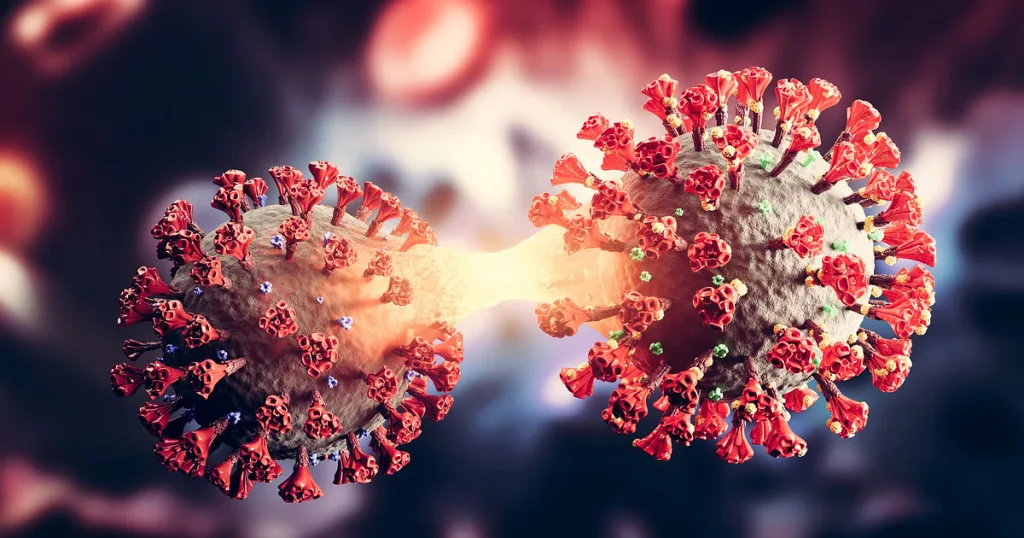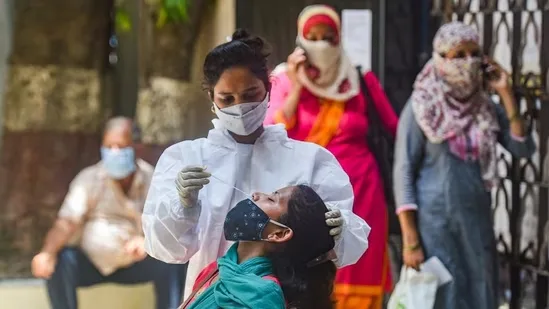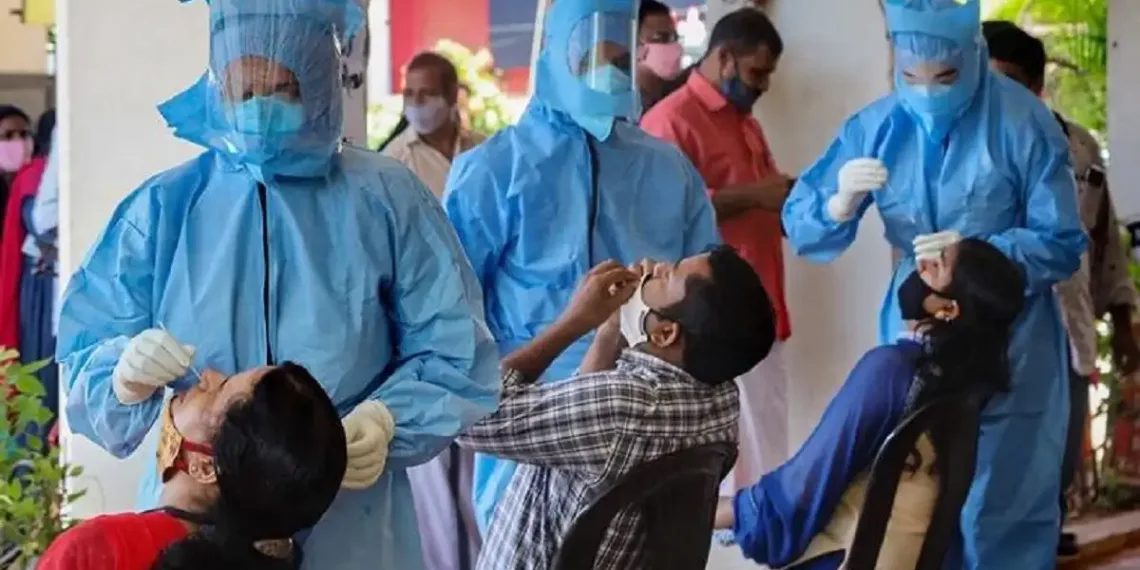As the world continues to adapt to the ever-changing landscape of the COVID-19 pandemic, India finds itself once again at the forefront of public health vigilance. The emergence of new COVID-19 variants—NB.1, 8.1, and LF.7—has reignited concerns among citizens, healthcare professionals, and policymakers alike. With each new strain comes a fresh set of challenges, from understanding unique symptoms and transmission patterns to updating treatment protocols and reinforcing preventive measures. The current wave, marked by these variants, is a stark reminder that the fight against COVID-19 is far from over.
As cases fluctuate and new information emerges daily, it is crucial for everyone to stay informed, vigilant, and proactive in safeguarding their health and the well-being of their communities. This comprehensive update delves into the latest developments, symptoms, causes, and treatment options associated with the NB.1, 8.1, and LF.7 variants, offering a clear and accessible guide for navigating this phase of the pandemic.
Table of Contents
COVID-19 New Variant NB.1, 8.1, LF.7 in India: What You Need to Know
The recent detection of the NB.1, 8.1, and LF.7 variants in India has prompted renewed attention from health authorities and the general public. These variants, identified through genomic sequencing, are being closely monitored for their potential impact on transmission rates, severity of illness, and vaccine effectiveness. While the core structure of the virus remains similar, subtle mutations in these new strains can influence how the virus spreads and how the body responds to infection.

Initial reports suggest that the NB.1, 8.1, and LF.7 variants may be associated with a slightly higher rate of transmission compared to earlier strains. This means that the virus can spread more easily from person to person, especially in crowded or poorly ventilated environments. However, there is currently no evidence to suggest that these variants cause more severe disease or are resistant to existing vaccines. Health experts emphasize that the best defense remains a combination of vaccination, mask-wearing, hand hygiene, and social distancing.
The government and health agencies are ramping up surveillance and testing efforts to track the spread of these variants. Hospitals and clinics are being advised to remain alert for any unusual patterns in symptoms or case clusters, and the public is being urged to report any signs of illness promptly. As scientists continue to study these variants, ongoing research will help determine whether any changes to treatment protocols or public health guidelines are necessary.
Recognizing Symptoms: How the New COVID-19 Variants Present
One of the most pressing questions surrounding the NB.1, 8.1, and LF.7 variants is whether they cause different or more severe symptoms than previous strains. According to the latest data, the symptoms associated with these new variants are largely consistent with those seen in earlier waves of COVID-19. Common signs include fever, cough, sore throat, fatigue, headache, and muscle aches. Some patients may also experience loss of taste or smell, nasal congestion, and gastrointestinal symptoms such as diarrhea or nausea.
What sets these variants apart, however, is the speed at which symptoms can develop and the potential for rapid transmission within households and communities. In some cases, individuals may experience milder symptoms, making it easier for the virus to go undetected and spread to others. This underscores the importance of regular testing, especially for those who have been in contact with confirmed cases or are experiencing even mild signs of illness.
Healthcare providers are also watching for any unusual presentations, such as increased rates of reinfection or breakthrough cases in vaccinated individuals. While vaccines continue to offer strong protection against severe disease and hospitalization, breakthrough infections can occur, particularly as the virus evolves. Early detection and prompt medical attention remain key to managing symptoms and preventing complications.

Common Symptoms of COVID-19 New Variants (NB.1, 8.1, LF.7)
| Symptom | Frequency in New Variants | Notes |
|---|---|---|
| Fever | Very common | Often first sign |
| Cough | Common | Dry or productive |
| Sore Throat | Common | May be mild or severe |
| Fatigue | Common | Can be prolonged |
| Headache | Common | Sometimes severe |
| Muscle Aches | Common | Generalized discomfort |
| Loss of Taste/Smell | Less common | Still reported in some cases |
| Nasal Congestion | Occasional | May mimic cold symptoms |
| Diarrhea/Nausea | Occasional | More common in children |
Causes and Transmission: How the New Variants Spread
The NB.1, 8.1, and LF.7 variants, like previous strains of COVID-19, are primarily spread through respiratory droplets when an infected person coughs, sneezes, or talks. The increased transmissibility of these variants means that even brief or casual contact can result in infection, particularly in indoor settings. Poor ventilation, large gatherings, and inconsistent mask usage further contribute to the spread.

Genetic mutations in these variants may allow the virus to bind more effectively to human cells, making it easier to establish infection. However, the fundamental modes of transmission remain unchanged, and the same preventive measures continue to be effective. Vaccination remains the most powerful tool in reducing the risk of severe illness, while masks, hand hygiene, and physical distancing help limit the spread in the community.
Health authorities are also investigating whether these variants are associated with higher rates of reinfection or breakthrough cases. While some mutations may help the virus partially evade immune responses, current evidence suggests that vaccines still provide significant protection, especially against severe outcomes.
Prevention Strategies for COVID-19 New Variants
| Strategy | Effectiveness Against New Variants | Recommendations |
|---|---|---|
| Vaccination | High | Stay up to date with boosters |
| Mask Wearing | High | Use well-fitted masks in public |
| Hand Hygiene | High | Wash hands frequently |
| Social Distancing | Moderate to High | Avoid crowded places |
| Ventilation | High | Ensure good airflow indoors |
| Testing & Isolation | High | Test if symptomatic, isolate if positive |
Treatment and Management: What to Do If You Get Sick
Treatment for COVID-19 caused by the NB.1, 8.1, and LF.7 variants remains largely the same as for previous strains. Most cases can be managed at home with rest, hydration, and over-the-counter medications to relieve symptoms such as fever and pain. It is important to monitor for warning signs, including difficulty breathing, persistent chest pain, confusion, or bluish lips or face, which require immediate medical attention.
For those at higher risk—such as the elderly, people with underlying health conditions, or those who are immunocompromised—early consultation with a healthcare provider is essential. Antiviral medications and monoclonal antibody treatments may be recommended in certain cases, and hospitalization may be necessary for severe illness. Vaccination continues to play a crucial role in reducing the risk of severe disease and death.
Public health officials also stress the importance of following isolation guidelines to prevent further spread. Individuals who test positive should stay home, avoid contact with others, and follow local health department recommendations regarding the duration of isolation and return to normal activities.
COVID-19 New Variant Treatment Overview
| Treatment Option | Indication | Notes |
|---|---|---|
| Home Care | Mild to moderate symptoms | Rest, fluids, symptom management |
| Antivirals | High-risk or severe cases | As prescribed by doctor |
| Monoclonal Antibodies | Select high-risk patients | Availability may vary |
| Hospitalization | Severe symptoms or complications | Oxygen, intensive care if needed |
| Vaccination | Prevention and reduced severity | Stay current with recommended doses |
Revolutionary AI Tool for Instant Blood Testing Launched at Niloufer Hospital
Frequently Asked Questions (FAQs)
Q1: Are the new COVID-19 variants NB.1, 8.1, and LF.7 more dangerous than previous strains?
Current evidence suggests that while these variants may spread more easily, they do not appear to cause more severe illness than earlier strains. Vaccines remain effective in preventing severe disease and hospitalization.
Q2: What should I do if I experience symptoms of COVID-19 or test positive for a new variant?
If you develop symptoms or test positive, isolate yourself from others, monitor your health, and seek medical advice if symptoms worsen. Follow local health guidelines for testing, isolation, and treatment.








